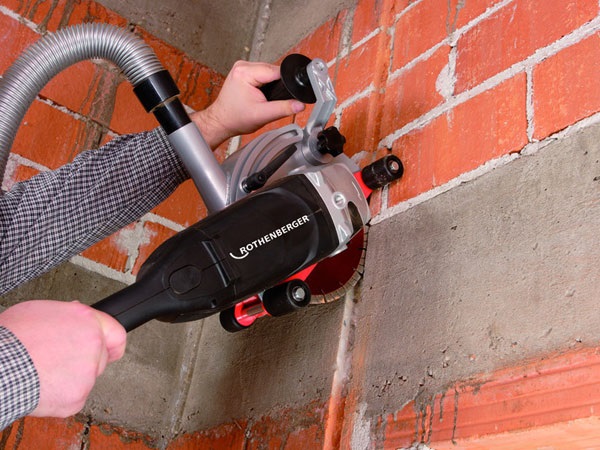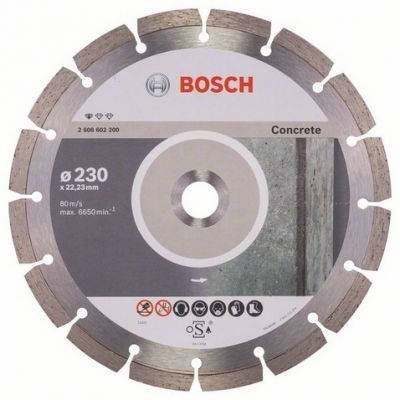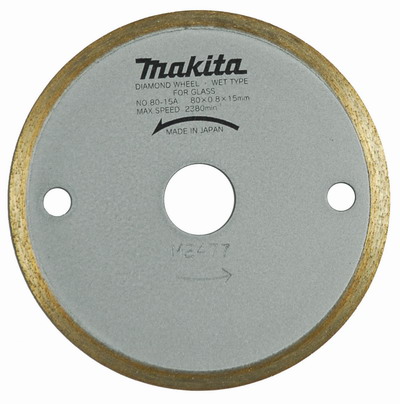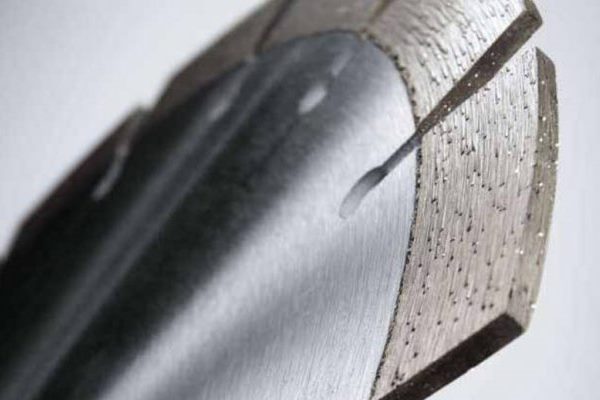How to choose a diamond disk for wall chaser
The main working element of the wall chaser is a diamond disc. With the right choice, he is able to quickly, accurately and without disrupting the structure of the material being processed, to cut the required depth and length in it. Manufacturers of hand-held power tools and consumables to it offer a huge range of discs that differ in purpose, geometry, shape of the cutting edges, the composition of the base and spraying. Knowledge of the basic selection criteria and marking features is an indispensable condition for the proper use of the tool.
Content
Diamond Disc Classification
Discs for wall chasers are not unique equipment: they can be suitable for an angle grinder or a stationary stone-cutting machine. In general, they are a round piece of tool steel with a bore in the center. On the outer surface of the incisors are located. Diamond chips are melted into them, which performs the main work of scraping the material being processed.

Depending on the cutting edge configurationsdirectly related to the purpose and method of application of the tool, diamond disks for wall chasers are divided into:
- segmental;
- solid;
- turbo segment.
Each of these types has its own technical features.
Segment discs
The main feature of this type of cutting wheels is the presence of slotsoriented in the radial direction. They divide the cutting part of the tool into several sectors, the number of which depends on the expected loads. This design provides maximum cutting speed.

This form allows you to better distribute the resulting stresses, effectively remove the resulting crumbs and cool the rubbing surfaces.
These discs are perfect for dry cutting homogeneous solid materials: they are used for concrete, brick, natural and artificial stone. Diamond chips deposited on the outer part of each segment does not have a viscous bonding alloy, which does not allow the use of cutting wheels of this design in construction details with internal reinforcement.
Solid circles
Diamond wheels of this type are shaped perfect circle. Their continuous cutting edge allows extremely thin and precise cutting even on reinforced concrete. A serious disadvantage of this design is the overheating of the rubbing surfaces due to insufficient heat dissipation.
Such consumables are only suitable for tools equipped with a cooling water supply system.

Turbo Segment Discs
Products of this type have combined the best qualities of the first two types of cutting wheels, which made them versatile, but also the most expensive. They have a solid structure with undulating slots on the sides. With their help, effective cooling takes place and an air support is created to remove the formed dust from the grooves. These drives fit for cutting reinforced concrete and other solid materials.

Subtlety performance cutting edge
In addition to the shape of the cutting wheel, great importance is attached to the size of the synthetic diamonds used, the method of their fixing and spatial arrangement. This affects the efficiency of the use of the disk on the materials of a particular structure and hardness.
Depending on the the arrangement of diamonds distinguish edges:
- with an arbitrary position of the crystals;
- sandwich, with an ordered arrangement in alternating directions.
The process of fixing diamond grit on the base is achieved by several methods:
- silver soldering;
- laser welding;
- sintering under the action of high temperatures and pressure;
- galvanic method of applying a binder metal.
The method of making a tool and the structure of its cutting surfaces allows you to choose the best disk for processing a particular material and selected application conditions, which is reflected in the marking of the cutting metal circles.

Features marking diamond discs
Product labeling is designed to give the user the maximum necessary information and simplify their identification. Diamond discs are usually applied using the laser engraving. It includes:
- manufacturer's logo;
- the name of the model and its article;
- direction of rotation;
- maximum linear speed or permissible revolutions per minute;
- references to the standard of manufacture;
- information about the quality class of the disk;
- the diameter of the disk and its bore.
Often, manufacturers of metal cutting wheels indicate the name of the material for which it is better to use a disc of this brand.
Selection rules
When choosing a disc, first of all pay attention to its specificationswhich must comply with the same indicators used wall chaser. These include:
- diameter of the circle, which can be in the range from 115 to 300 mm or more, with the most running 125 mm and 150 mm;
- planting diameter of 22.23 or 25.4 mm;
- maximum rotation speed;
- material that can be cut;
- possibility of dry work.
It is also important to consider nature and intensity of the upcoming operation. With small volumes it is more profitable to buy cheap models. In the case of continuous use over a long period of time it is rational to purchase the most high-quality samples.

The decision on which disc is best to use depending on the material of the parts being machined is made on the simple principle. Specialized models show maximum efficiency only in conditions that are optimal for them. In the case of interaction with dissimilar materials it is necessary to have universal cutting wheels.
A win-win is to choose a drive from the same manufacturer as the brand of your wall chaser. Famous brands are trying to produce consumables for their tool, suitable for all possible situations. If for some reason you decide to try cutting circles from other manufacturers, purchase quality products for professional cutting from Bosch, Hilty or Distar.

/rating_off.png)











